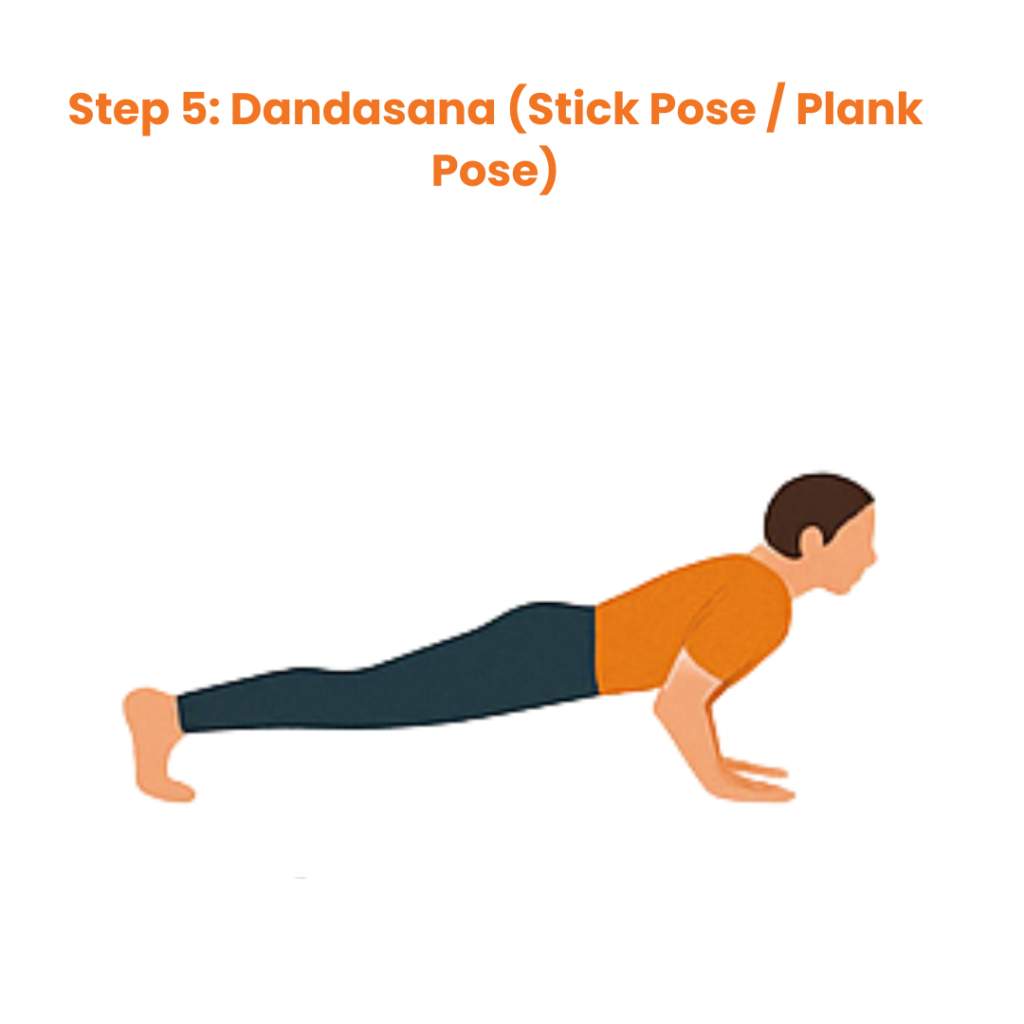Introduction
Surya Namaskar, also known as Sun Salutation or Surya Pranam, is one of the most popular and powerful yoga exercises practiced worldwide. This dynamic sequence of 12 yoga poses (asanas) combines pranayama yoga (breath control) with flowing movements to energize your body, improve flexibility, and promote mental well-being. Whether you are a beginner or an experienced practitioner, understanding the importance of Surya Namaskar and learning how and when to do it can transform your daily wellness routine.
What is Surya Namaskar?
Surya Namaskar is a series of 12 graceful yoga positions that pay homage to the sun — a vital source of life and energy. It is also called Sun Salutation or Surya Pranam, and forms the foundation of many yoga styles including Hatha yoga and Ashtanga yoga. Each pose links breath with movement, promoting balance, strength, and relaxation.
Importance of Surya Namaskar
1. Physical Benefits
- Enhances flexibility and tones muscles through yoga stretches
- Improves posture with standing yoga poses
- Stimulates the cardiovascular system for better heart health
- Boosts metabolism aiding in yoga for weight loss
- Improves digestion and detoxifies the body
2. Mental Benefits
- Reduces stress and anxiety by calming the mind
- Enhances concentration and mindfulness through coordinated breath and movement
- Promotes emotional balance
3. Spiritual Benefits
- Acts as a moving meditation connecting body, breath, and mind
- Invokes gratitude and reverence for nature and the sun’s energy
- Deepens the practice of yoga as a holistic lifestyle
How to Do Surya Namaskar: Step-by-Step Guide
| Step | Yoga Pose (Asana) | Key Action & Breath |
|---|---|---|
| 1 | Pranamasana (Prayer Pose) | Stand straight, palms together, inhale |
| 2 | Hasta Uttanasana (Raised Arms) | Stretch arms up and back, inhale |
| 3 | Hasta Padasana (Hand to Foot) | Bend forward touching toes, exhale |
| 4 | Ashwa Sanchalanasana (Equestrian) | Right leg back, left knee bent, inhale |
| 5 | Dandasana (Stick Pose) | Jump back to plank position, hold breath |
| 6 | Ashtanga Namaskara (Salute) | Lower knees, chest, chin down, exhale |
| 7 | Bhujangasana (Cobra Pose) | Arch back, inhale |
| 8 | Adho Mukha Svanasana (Downward Dog) | Lift hips, exhale |
| 9 | Ashwa Sanchalanasana (Equestrian) | Left leg forward, inhale |
| 10 | Hasta Padasana (Hand to Foot) | Bend forward, exhale |
| 11 | Hasta Uttanasana (Raised Arms) | Stretch arms up, inhale |
| 12 | Tadasana | Return to standing, exhale |
Tip: Repeat the full sequence 3-6 times daily for best results.

1. Pranamasana (Prayer Pose)
How to do: Stand straight with feet together, palms joined in front of your chest in a prayer position. Keep your spine erect, shoulders relaxed, and eyes closed. Take a few deep breaths to center yourself.
Benefits: Helps improve concentration, calms the mind, and prepares the body for the practice ahead.

2. Hasta Uttanasana (Raised Arms Pose)
How to do: Inhale deeply and raise your arms upward and backward, keeping your biceps close to your ears. Stretch your whole body gently while keeping your feet firmly grounded. Look slightly upward.
Benefits: Stretches the spine, improves lung capacity, strengthens the shoulders and arms, and energizes the body.

3. Hasta Padasana (Hand to Foot Pose)
How to do: Exhale, bend forward from the hips, and try to touch your feet or floor with your hands. Keep legs straight and head close to knees.
Benefits: Stretches the back and hamstrings, improves digestion, and calms the mind.

4. Ashwa Sanchalanasana (Equestrian Pose)
How to do: Inhale, stretch your right leg back, keep your left foot between the hands, drop the right knee to the ground, and look up with your chest open.
Benefits: Strengthens legs, opens the chest and hips, improves balance and flexibility.

5. Dandasana (Stick Pose)
How to do: Exhale, move the left leg back to join the right leg. Keep your body in a straight line from head to heels. Arms should be perpendicular to the floor, shoulders above wrists.
Benefits: Builds core strength, improves posture, and prepares the body for the next pose.

6. Ashtanga Namaskara (Salute with Eight Parts
How to do: Exhale, gently lower your knees, chest, and chin to the floor. Keep your hips slightly raised. Eight parts — both feet, both knees, chest, chin, and both hands — should touch the ground.
Benefits: Strengthens arms and chest, improves flexibility, and prepares the body for the upcoming poses.

7. Bhujangasana (Cobra Pose)
How to do: Inhale, press your palms firmly on the ground, and lift your chest up while keeping your elbows slightly bent. Keep your shoulders relaxed and look upward gently.
Benefits: Strengthens the spine, stretches the chest and lungs, and improves flexibility of the back.

8. Adho Mukha Svanasana (Downward Facing Dog Pose)
How to do: Exhale, lift your hips up and back, forming an inverted V shape with your body. Keep your hands shoulder-width apart and feet hip-width apart, pressing your heels gently toward the floor. Keep your head relaxed between your arms.
Benefits: Stretches the spine, shoulders, and hamstrings, improves blood circulation, and energizes the body.

9. Ashwa Sanchalanasana (Equestrian Pose)
How to do: Inhale, bring your right leg forward between your hands, drop your left knee to the floor, and look upward. Keep your palms firmly on the ground and open your chest.
Benefits: Stretches the thighs and groin, strengthens the spine, and improves balance and flexibility.

10. Hastapadasana (Standing Forward Bend)
How to do: Exhale, bring your left leg forward to meet the right leg, and bend forward from the hips. Try to touch your toes or place your palms beside your feet on the floor. Keep your head relaxed and close to your knees.
Benefits: Stretches the hamstrings, calves, and spine; improves digestion and calms the mind.

11. Hastauttanasana (Raised Arms Pose)
How to do: Inhale, lift your torso up and stretch your arms upward and slightly back. Keep your palms facing each other and look up toward your hands. Keep your body straight and engage your core.
Benefits: Stretches the chest and lungs, improves spinal flexibility, and enhances oxygen intake.

12. Tadasana (Mountain Pose)
How to do: Exhale, straighten your body and bring your arms down by your sides. Stand tall with feet together, palms facing your body, and relax your shoulders. Maintain steady breathing and balance.
Benefits: Improves posture, strengthens thighs, knees, and ankles, and promotes calmness and focus.
When is the Best Time to Practice Surya Namaskar?
Surya Namaskar Benefits Backed by Science
Surya Namaskar and Yoga Styles
- It is integral to Hatha yoga, Ashtanga yoga, and Vinyasa yoga routines
- Adaptable for beginners and advanced practitioners
- Can be combined with other yoga asanas and yoga exercises for a complete workout
Tips for Beginners
- Start slowly, mastering each pose and breath
- Use a yoga mat or comfortable surface
- Follow online tutorials or join online yoga classes for guidance
- Consult with a yoga instructor if possible
- Wear comfortable clothing
Frequently Asked Questions (FAQs)
Yes, it’s an effective yoga exercise that boosts metabolism and tones muscles.
Start with 3 rounds and gradually increase to 12 rounds.
Generally yes, but consult a doctor if you have health conditions.
Navratri: The 9 Days and Their Names
Navratri is one of the most celebrated festivals in India. It spans over nine nights…
Passion Flower (Krishna Kamal): The Mysterious and Beautiful Bloom
Nature has gifted us with countless unique and enchanting flowers, but few are as striking…
Jan 2026 Digital Calander and Panchang
श्री हिन्दू डिजिटल कैलेंडर – जनवरी 2026 🕉️Shree Hindu Digital Calendar English हिन्दी 🔔 Reminders…
अगस्त 2025 धार्मिक कैलेंडर
अगस्त 2025 धार्मिक कैलेंडर | गणेश जी स्थापना, जन्माष्टमी, राखी और अन्य पर्व 🗓 अगस्त…
August 2025 — Festivals, Muhurats, Rashifal & Seasonal Notes
August 2025 — Festivals, Muhurat & Rashifal August 2025 — Festivals, Muhurats, Rashifal & Seasonal…
Major Hindu Festivals in 2025: Dates, Significance & Celebrations
Hindu Festivals in 2025: Dates, Significance & Celebrations Major Hindu Festivals in 2025: Dates, Significance…




